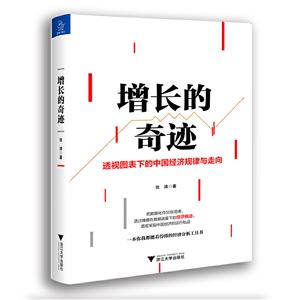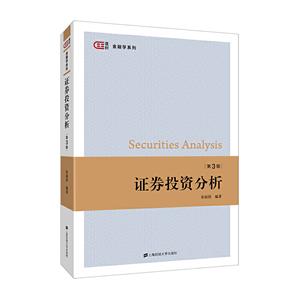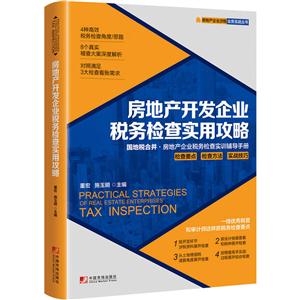公司法理之比较研究

|
公司法理之比较研究作者:原洁 开 本:32开 书号ISBN:9787513044134 定价:58.0 出版时间:2016-07-01 出版社:知识产权出版社 |
公司法理之比较研究 本书特色
公司治理是一个全球性的论题。目前,有一个趋势就是许多国家选择采用美国的公司治理模式。中国应该选择怎样的公司治理模式?这个实际问题的背后隐含了公司治理领域里两个根本性的理论问题,其一是关于是否存在*优公司治理模式的争论,其二是如何实施公司治理规则,政府应该在何种限度之内干预公司的治理。关于*一个问题,本书对美国的公司治理模式是*优方式这一观点持不同看法,因为美国公司治理模式下的独立董事制度存在诸多内在缺陷和未解决的困局,没有我们预想的完善。另外,同一个公司治理模式在不同国家市场环境下发挥的作用也会不同,很难断言哪个公司治理模式更好;与此同时,公司治理模式之间亦出现功能性整合的趋势。关于第二个问题,本书认为有必要在政府干预和市场干预中寻求一个平衡,采用由企业自主选择的方式可以在某种程度上促使公司治理模式之间的竞争。
公司治理是一个全球性的论题。目前,有一个趋势就是许多国家选择采用美国的公司治理模式。中国应该选择怎样的公司治理模式?这个实际问题的背后隐含了公司治理领域里两个根本性的理论问题,其一是关于是否存在*优公司治理模式的争论,其二是如何实施公司治理规则,政府应该在何种限度之内干预公司的治理。关于*一个问题,本书对美国的公司治理模式是*优方式这一观点持不同看法,因为美国公司治理模式下的独立董事制度存在诸多内在缺陷和未解决的困局,没有我们预想的完善。另外,同一个公司治理模式在不同国家市场环境下发挥的作用也会不同,很难断言哪个公司治理模式更好;与此同时,公司治理模式之间亦出现功能性整合的趋势。关于第二个问题,本书认为有必要在政府干预和市场干预中寻求一个平衡,采用由企业自主选择的方式可以在某种程度上促使公司治理模式之间的竞争。
Corporate governance is a global topic. There is a trend that many countries choose to follow US’ model. Which model of corporate governance shall China choose? Behind this practical question, involved are two fundamental theoretical issues within corporate governance regime. One is the debate over whether the best practice of corporate governance exists, and the other is how to implement corporate governance rules, and to which extent the government should intervene in the governance of corporations. This paper disagrees with the assertion that “Anglo-American” model is the best practice, arguing that the device of independent director system under “Anglo-American” model has many internal weaknesses and unsolved dilemma, not perfect as we assumed. In addition, the same corporate governance model may have different effect in different countries and markets, and it is difficult to tell which corporate governance system is better. Meanwhile, there is a tendency of functional convergence among the corporate governance models. With respect to the second, this paper holds the view that it is necessary to find a balance between governmental influence and market influence, and to certain extent, optional approach can provide competition among corporate governance models.信息
公司法理之比较研究 目录
Table of ContentsChapter 1 Origin and Development of
Independent Director System in US
Introduction
1.Background of initiating independent director system in US
1.1 From shareholder dominance to board of director dominance
1.2 From board of director dominance to managerial dominance
2.Expected function of independent director system in US
3.Adoption of independent director system in US
3.1 Regulatory rules? influence
3.2 Institutional shareholder activism
3.3 ALI Corporate Governance Project
3.4 Market participants? internal incentiveTable of Contents Chapter 1 Origin and Development of Independent Director System in US Introduction 1.Background of initiating independent director system in US 1.1 From shareholder dominance to board of director dominance 1.2 From board of director dominance to managerial dominance 2.Expected function of independent director system in US 3.Adoption of independent director system in US 3.1 Regulatory rules? influence 3.2 Institutional shareholder activism 3.3 ALI Corporate Governance Project 3.4 Market participants? internal incentive 4.Effectiveness of independent director system in US 4.1 Positive views on effectiveness of independent director system 4.2 Negative views on effectiveness of independent director system 4.3 Other mechanisms? monitoring 5.Corporate scandals: failure of gatekeepers in corporate governance 5.1 Case of Enron?s collapse 5.2 Case of Adelphia Communications 5.3 Case of Tyco International 5.4 Case of Global Crossing Ltd. 5.5 Case of WorldCom?s bankruptcy 6.New rules after the ENRON collapse 6.1 Sarbanes?Oxley Act of 2002 6.2 New Stock Exchange Rules: NYSE(the New York Stock Exchange) and NASD (the National Association of Securities Dealers) Summary Chapter 2 Adoption of Independent Director System in China Introduction 1.Shareholding structure in Chinese listed corporations 1.1 Transformation from State?owned enterprises to modern corporations 1.2 Shareholding structure in Chinese listed corporations 2.Motivation of introducing independent director system in China 2.1 Invalidity of board of supervisors 2.2 Exploitation of small shareholders by large shareholders 2.3 Influence from government 3.Expected role of independent director system in China 4.Regulations of independent director system in China 4.1 Process of introducing independent director system into China 4.2 Substantial rules of independent director system in China 5.Differences in rules regarding independent director system between China and the US 5.1 Different expected roles 5.2 Different requirements on proportion 5.3 Different definition of independence 5.4 Different requirement on committee structure 5.5 Different requirement on nomination 5.6 Necessity to reconcile independent director and board of supervisors Summary Chapter 3 Actual Effect of Independent Director System in China Introduction 1.Appointment of independent directors in China 2.Nomination of independent directors in China 3.Composition of independent directors in China 4.Participation of independent directors in China 5.Working environment of independent directors in China 6.Replacement of independent directors in China 7.Link between independent directors and corporate performance 8.Two cases about independent directors in China Summary Chapter 4 Inherent Weaknesses of Independent Director System Introduction 1.Rationale in independent director system 2.Competence problem in independent director system 2.1 Delimitation of “independence” 2.2 Capacity and nomination of independent director 2.3 Tenure and proportion of independent director 3.Incentive problem in independent director system 3.1 Compensation of independent director 3.2 Duties and liabilities of independent director 3.3 Concern for reputation Summary Chapter 5 Board of Supervision vs. Independent Director System Introduction 1.Analysis of Board of Supervision in Germany 1.1 Arrangement of Board of Supervision in Germany 1.2 Analysis of Board of Supervision 1.3 Marked traits of board of supervision in Germany 2.Appraisal of Board of Supervision in Germany 2.1 The merits of board of supervision 2.2 The weakness of board of supervision 3.Comparison between the two internal monitoring systems in Germany and US 3.1 Structural differences in the two internal monitoring systems 3.2 Endogenetic differences derived from the local forces 3.3 Special concerns on efficiency of internal control 4.Trend of functional convergence 4.1 Evidence of convergence from American side 4.2 Evidence of convergence from German side Summary Chapter 6 Coexistence of Two Internal Monitoring Systems in One Company Introduction 1.Different opinions on the coexistence of two internal monitors 2.Arguments for supporting coexistence of two internal monitors 3.Coexistence causes conflicts in regulation 3.1 Overlapped powers and duties between board of supervisors and independent directors under Chinese regulations 3.2 Conflicting legal status of independent director system and board of supervisors 4.Coexistence causes conflicts in practice 4.1 Overlapped role of independent director system and board of supervisors in practical view 4.2 Functional similarity between independent director system and board of supervisors 4.3 Criticism on certain proposals 4.4 Competition for power on oversight 4.5 Weakening of actual effect on oversight 4.6 Free?riding problem 4.7 Increased cost for the company 4.8 Cost and benefit analysis Summary Chapter 7 Mandatory approach or Optional approach Introduction 1.Different approaches to implementing independent director system 1.1 Mandatory approach 1.2 Recommendatory approach 1.3 Optional approach—a hybrid solution 2.Government regulation theory and market?oriented theory 2.1 Government regulation theory 2.2 Contractual or market?oriented theory 3.Appraisal of mandatory approach 3.1 The values of mandatory approach 3.2 Problems with mandatory approach 4.Appraisal of recommendatory approach 4.1 Advantages of recommendatory approach 4.2 Disadvantages of recommendatory approach 5.Evidence from Japanese experience 5.1 Amendment of Japanese Commercial Code in 2002 5.2 Actual effect ofthe amendment in 2002 5.3 Indications from Japanese experience 6.Values of optional approach 6.1 Overcome the detriments of mandatory approach 6.2 Overcome the detriments of recommendatory approach 6.3 Provide competition among corporate governance rules Summary Chapter 8 Which Approach is Suitable for China Introduction 1.Chinese market needs governmental intervention 1.1 Lack of mature free market in China 1.2 Special concern on protecting minority shareholders 2.Improper to mandate independent director system in China 2.1 Inherent problems in the independent director system 2.2 Problems with “transplant effect” 2.3 Doubts on best practice debate 2.4 Weakness of mandatory rules 2.5 A one?size?fits?all approach is both costly and unnecessary 3.Suitable and feasible for China to make independent director system optional 3.1 Wasteful to abandon the independent director system in China 3.2 Improper to mandate the coexistence of independent director system and supervisory board system in one company 3.3 Feasible to make independent director system optional Conclusion Bibliography信息
管理 一般管理学 管理学
在线阅读
- 最新内容
- 相关内容
- 网友推荐
- 图文推荐
| [高考] 2022 西安电子科技大学《软件工程》大作业答案 (2022-04-25) |
| [家长教育] 孩子为什么会和父母感情疏离? (2019-07-14) |
| [教师分享] 给远方姐姐的一封信 (2018-11-07) |
| [教师分享] 伸缩门 (2018-11-07) |
| [教师分享] 回家乡 (2018-11-07) |
| [教师分享] 是风味也是人间 (2018-11-07) |
| [教师分享] 一句格言的启示 (2018-11-07) |
| [教师分享] 无规矩不成方圆 (2018-11-07) |
| [教师分享] 第十届全国教育名家论坛有感(二) (2018-11-07) |
| [教师分享] 贪玩的小狗 (2018-11-07) |






